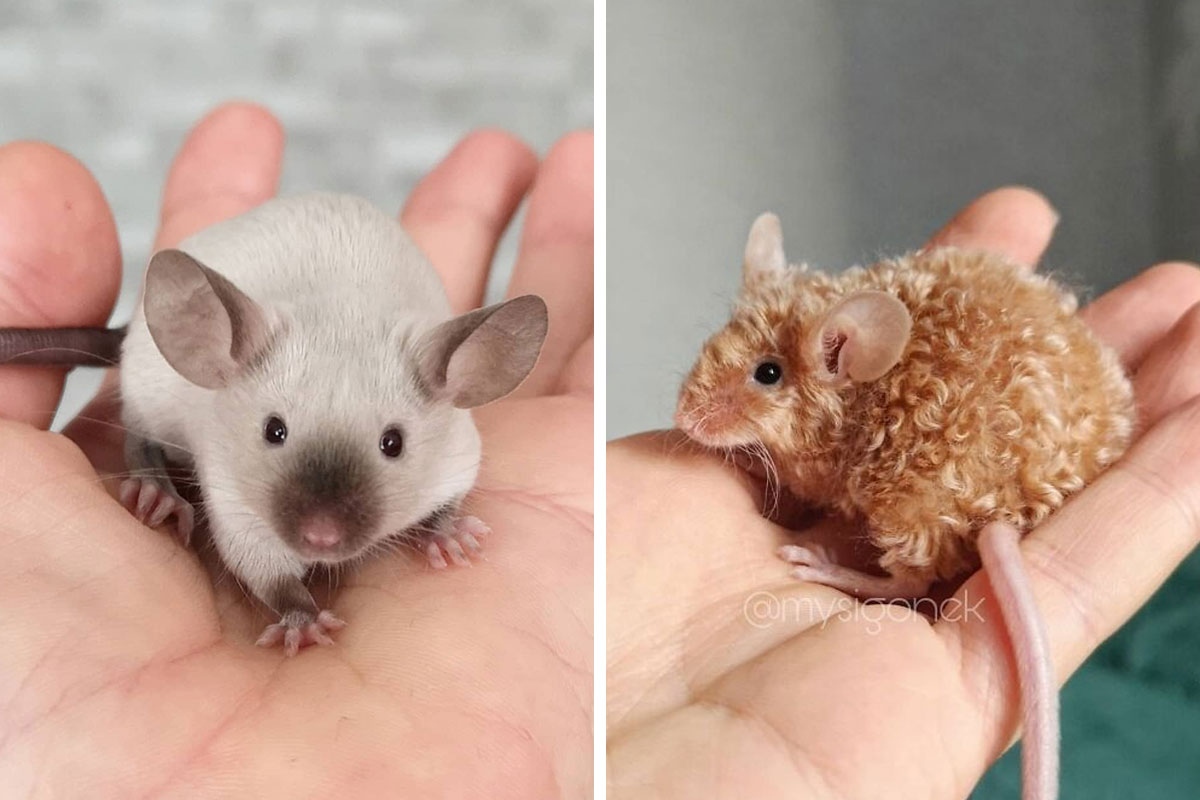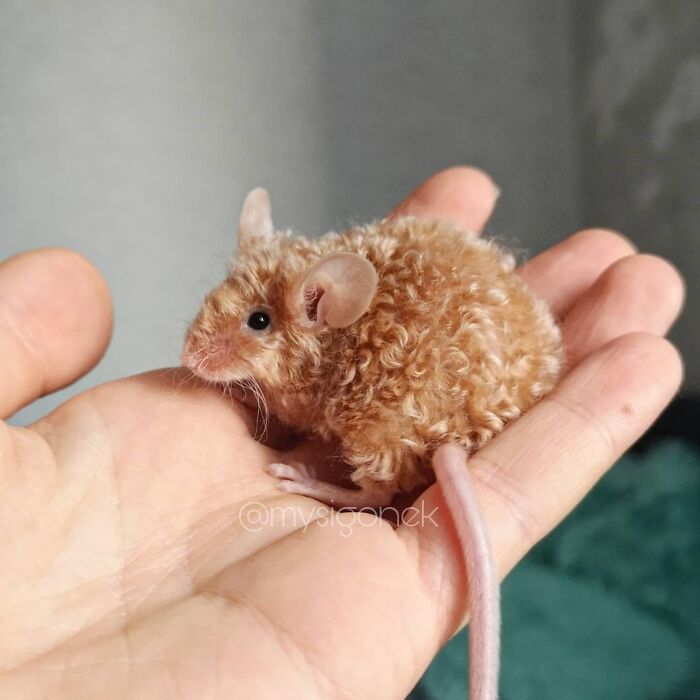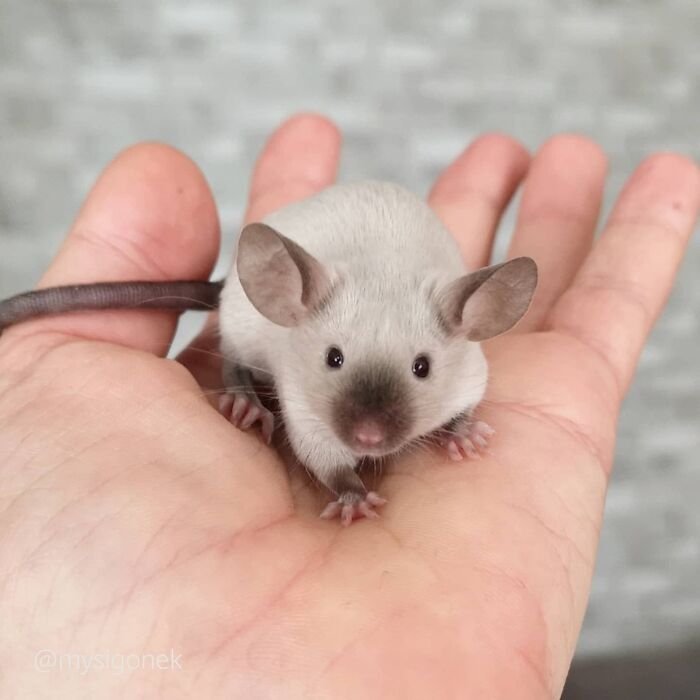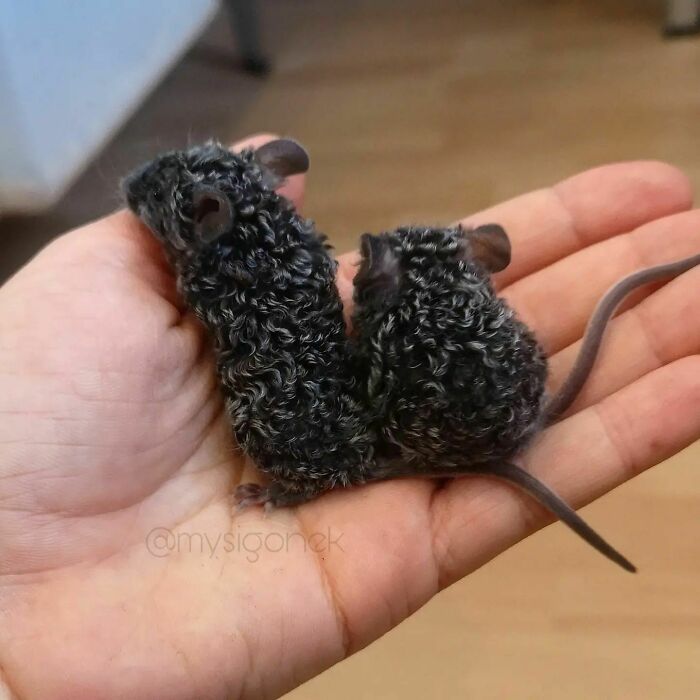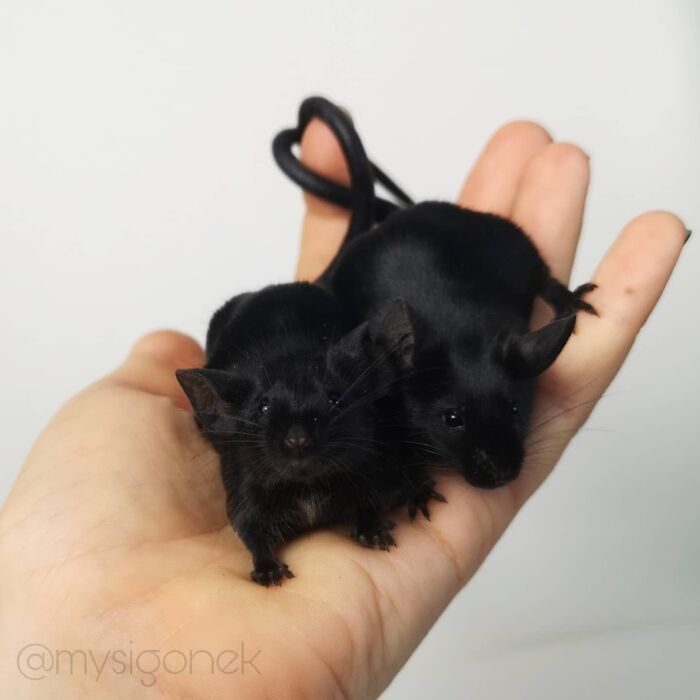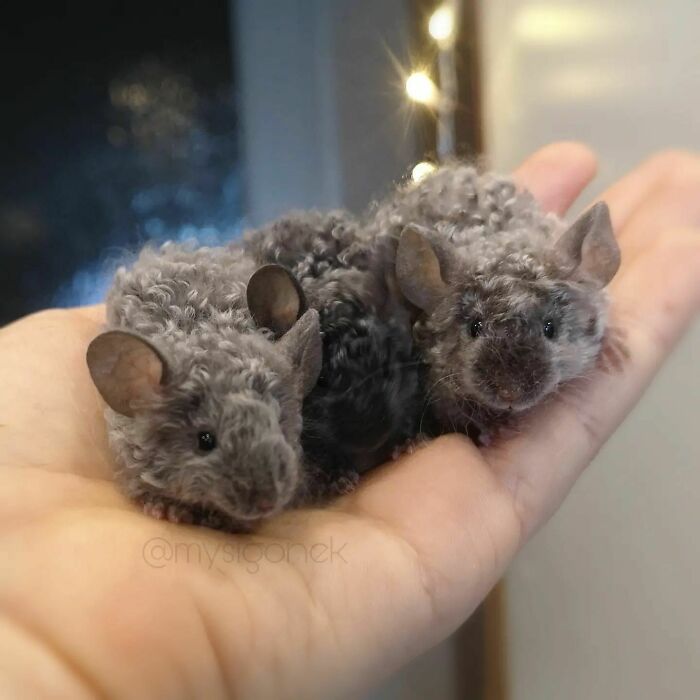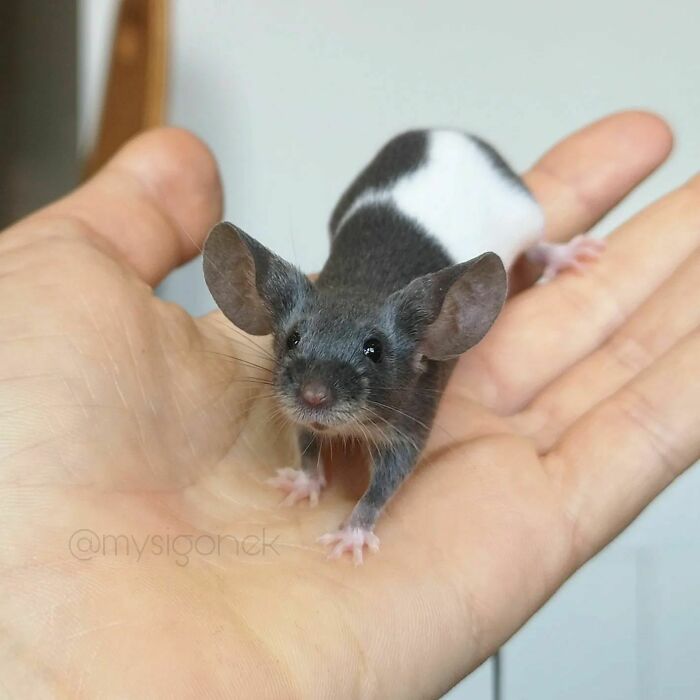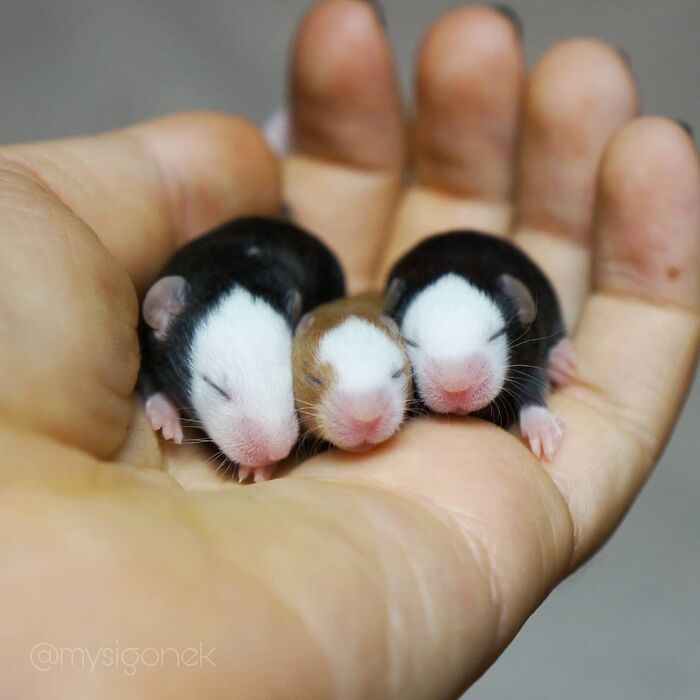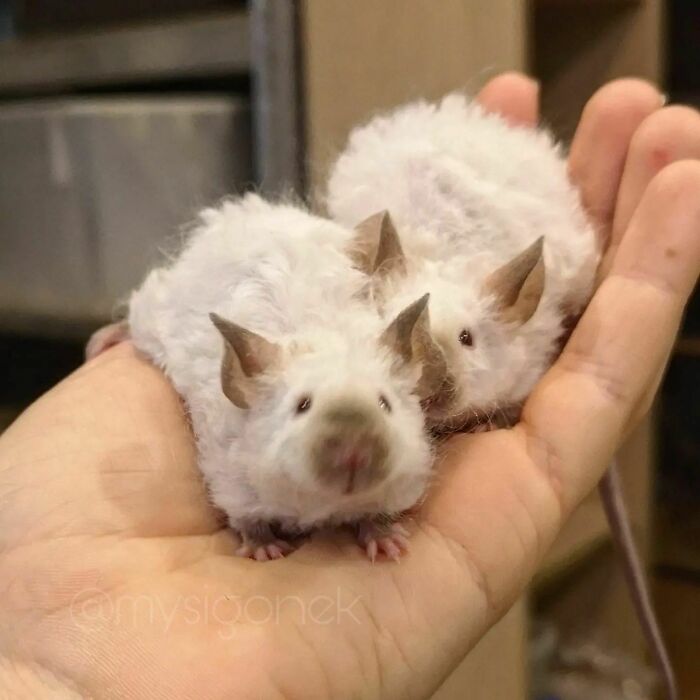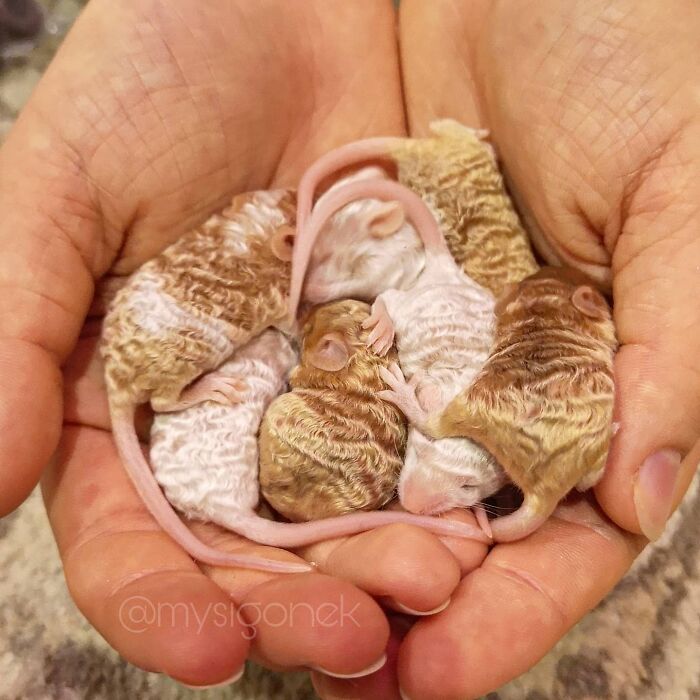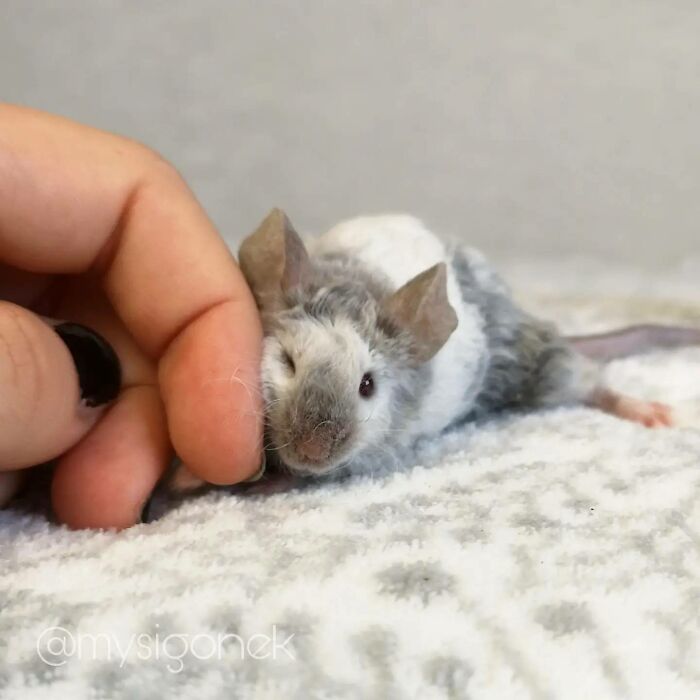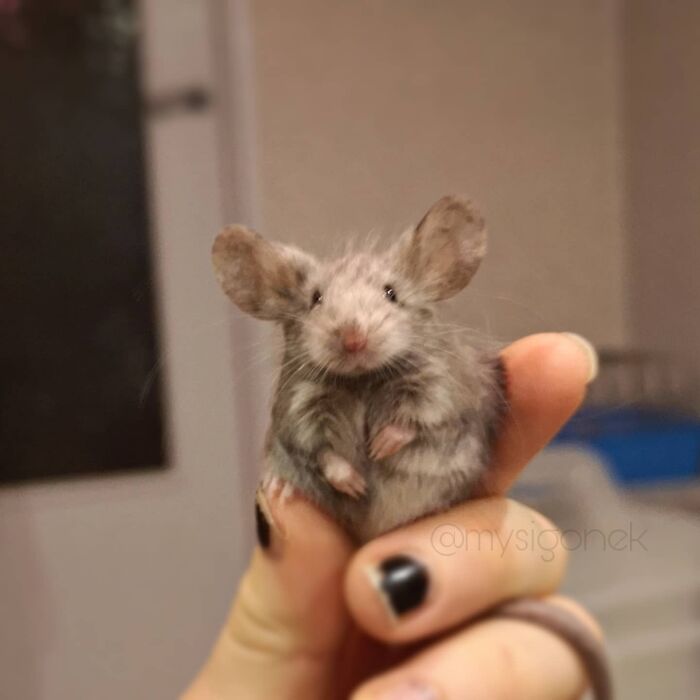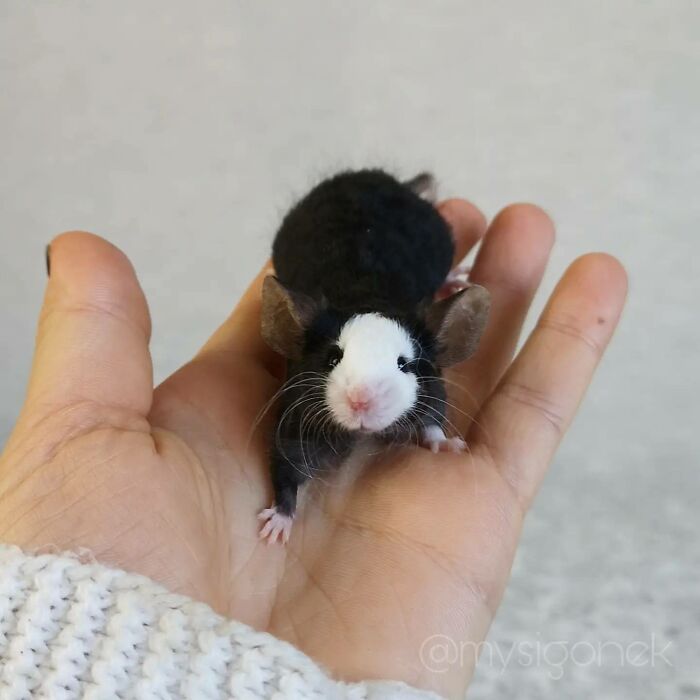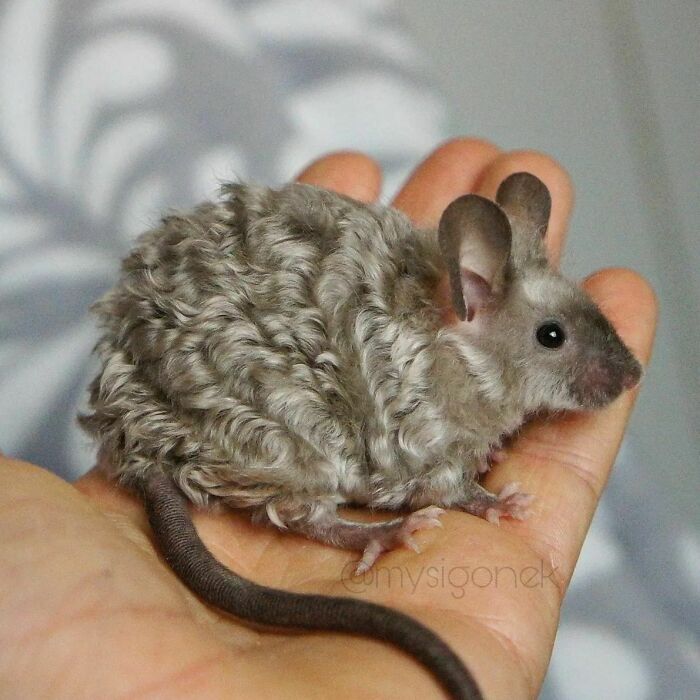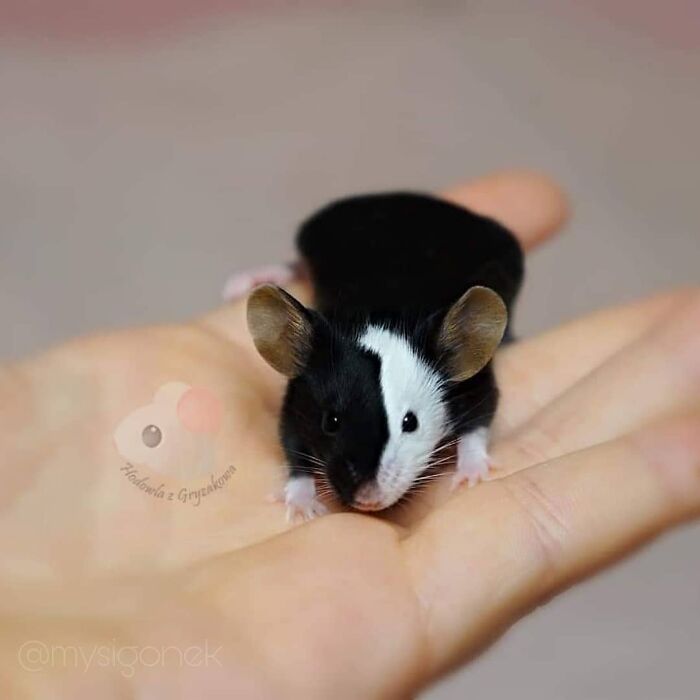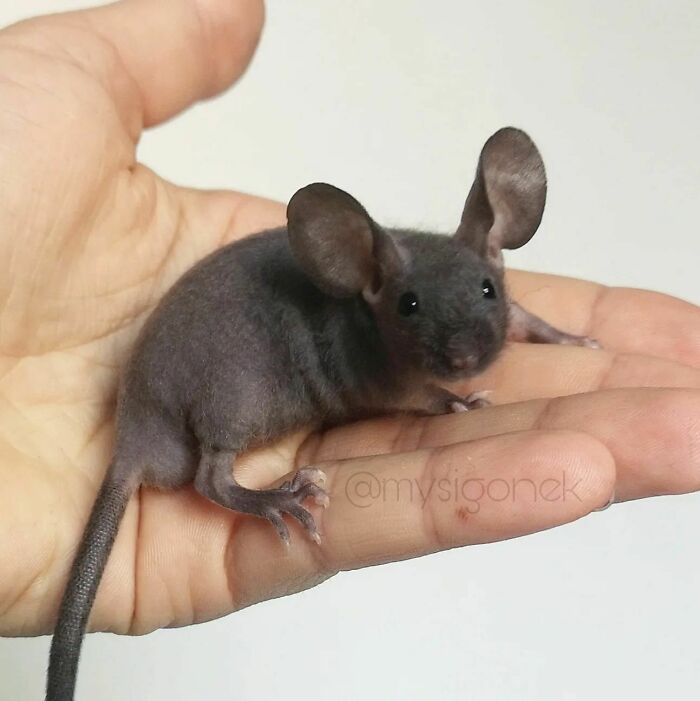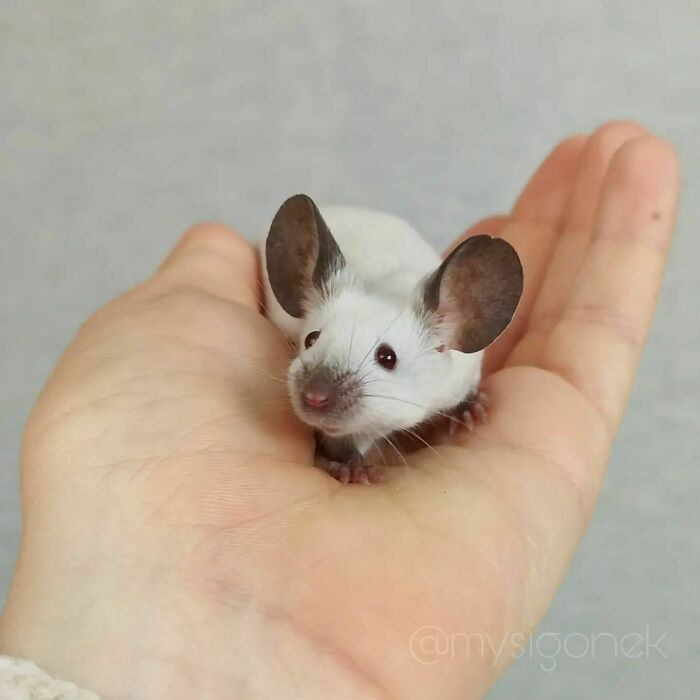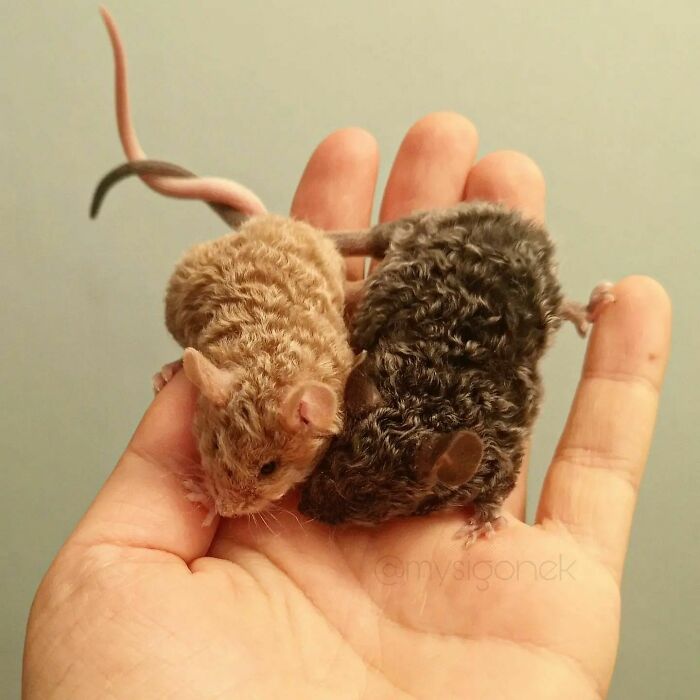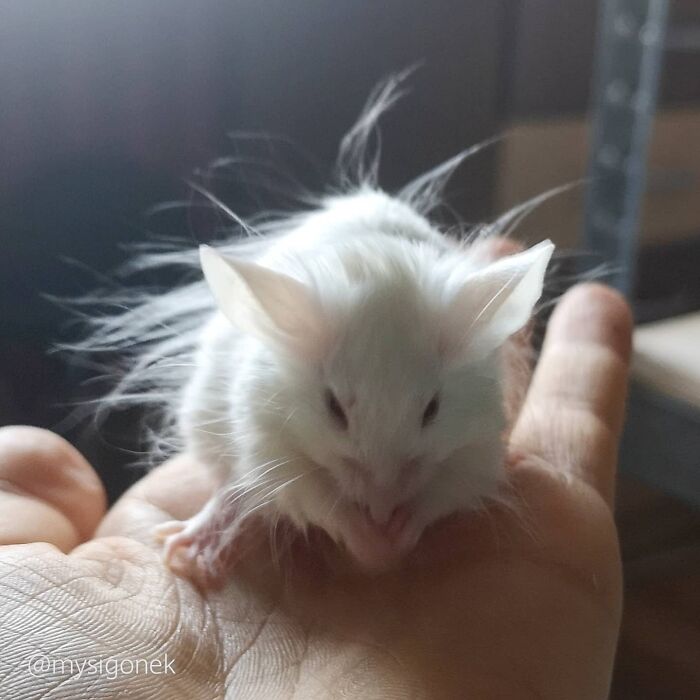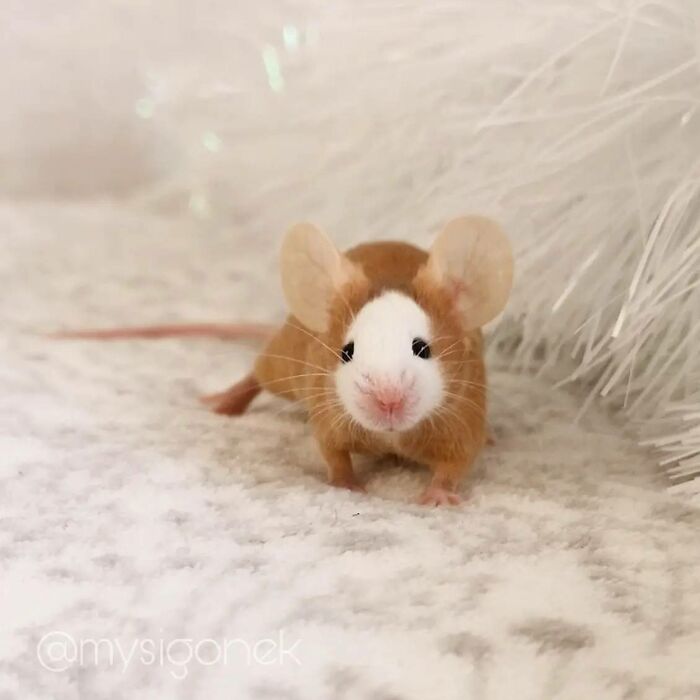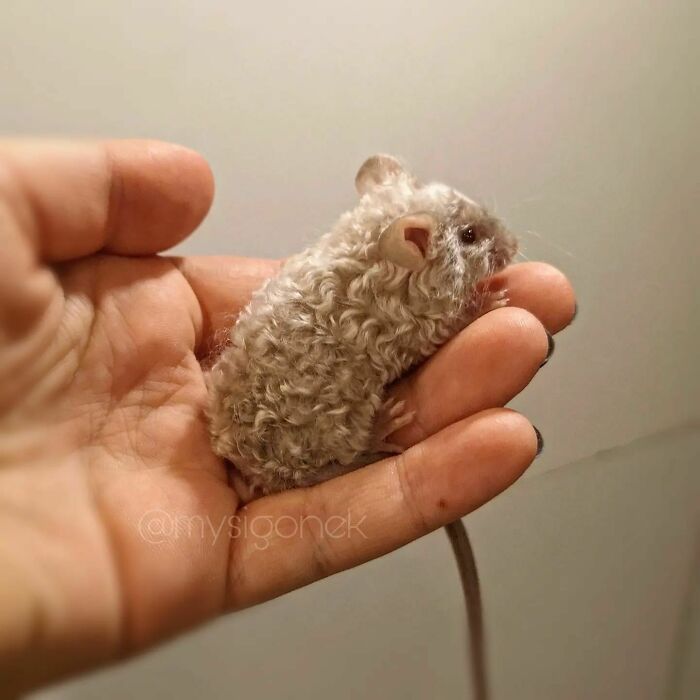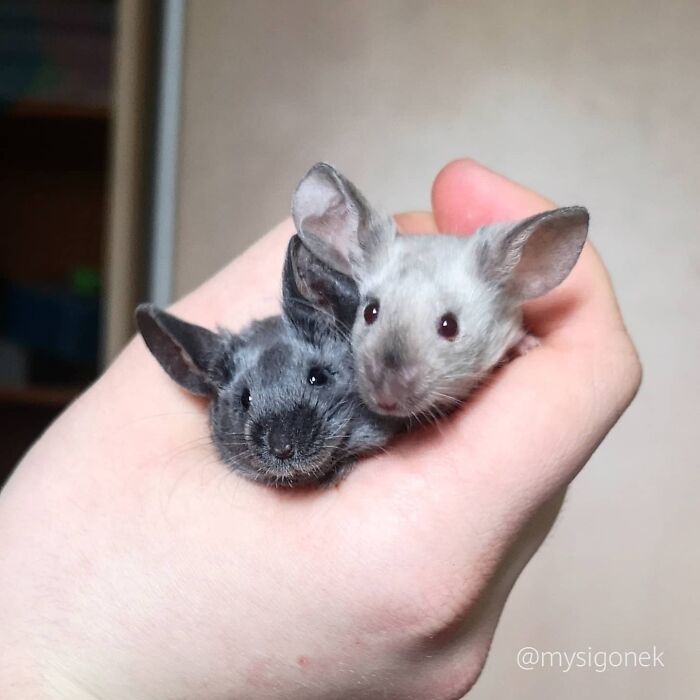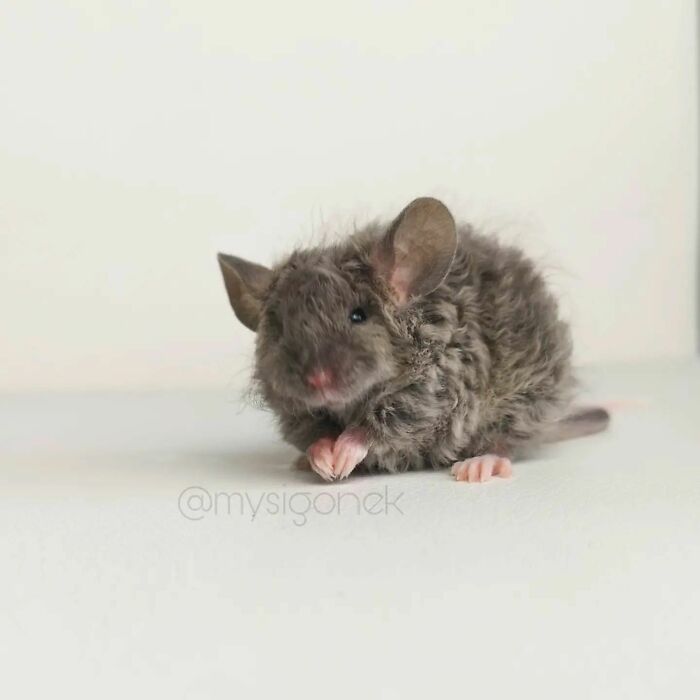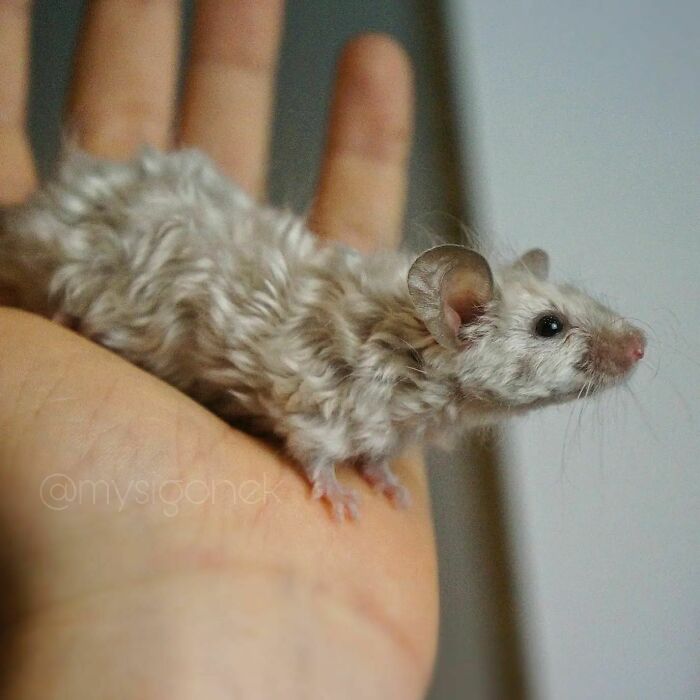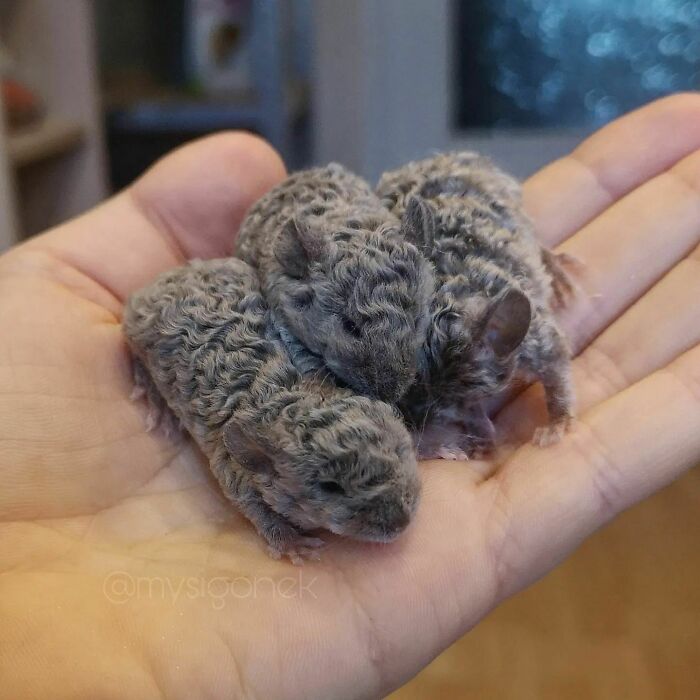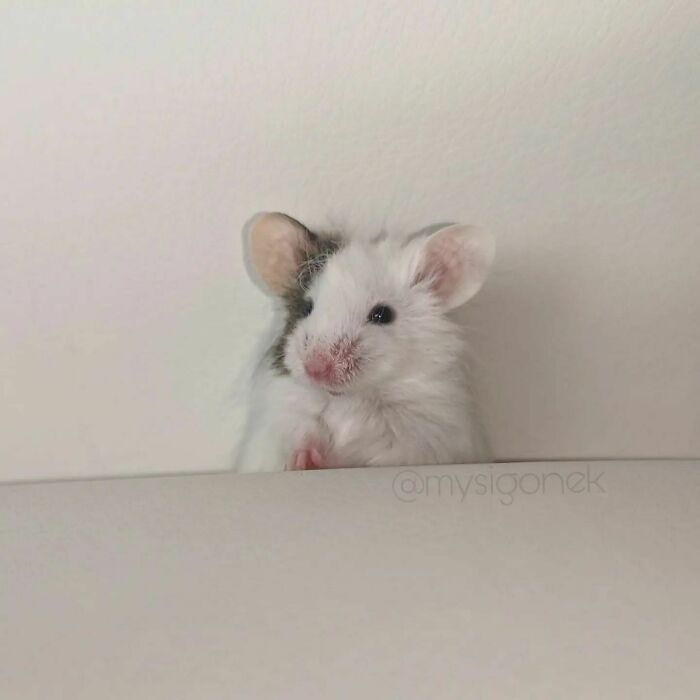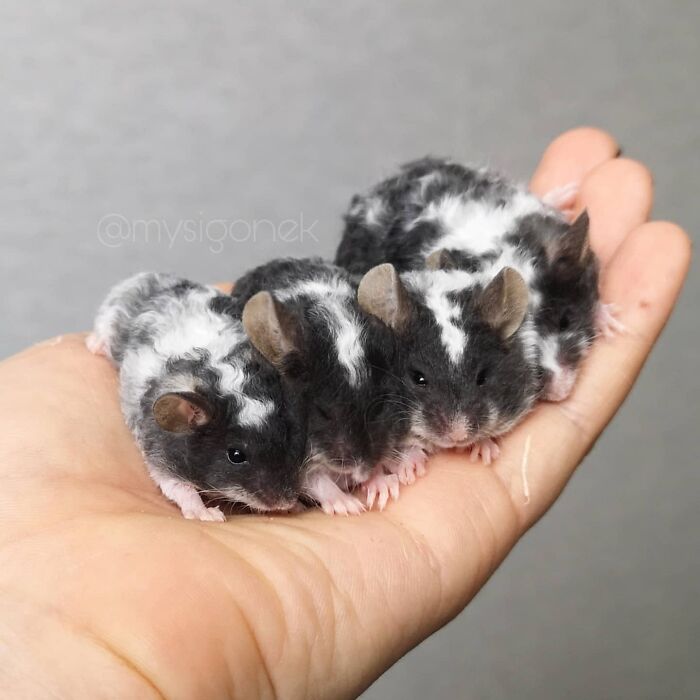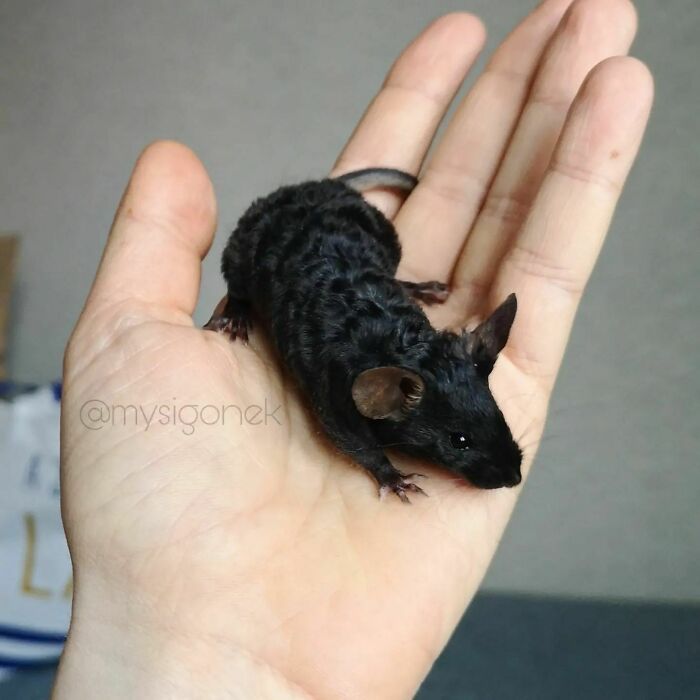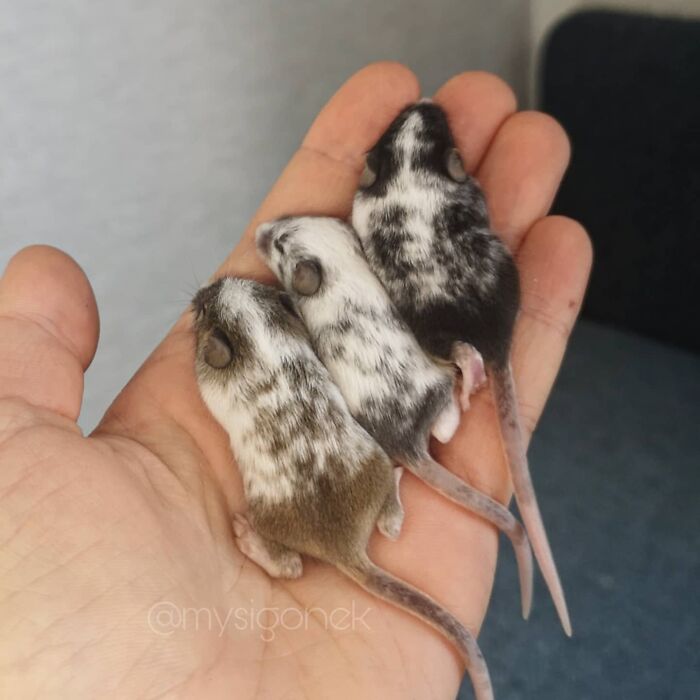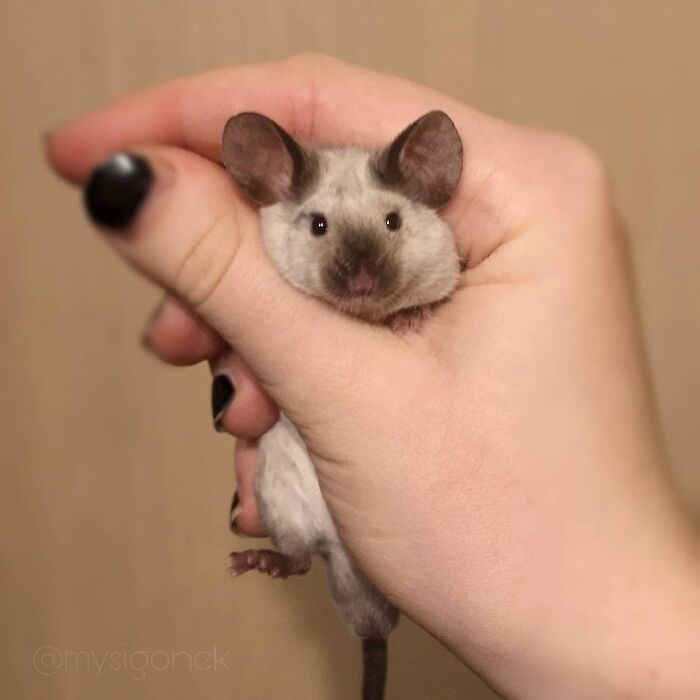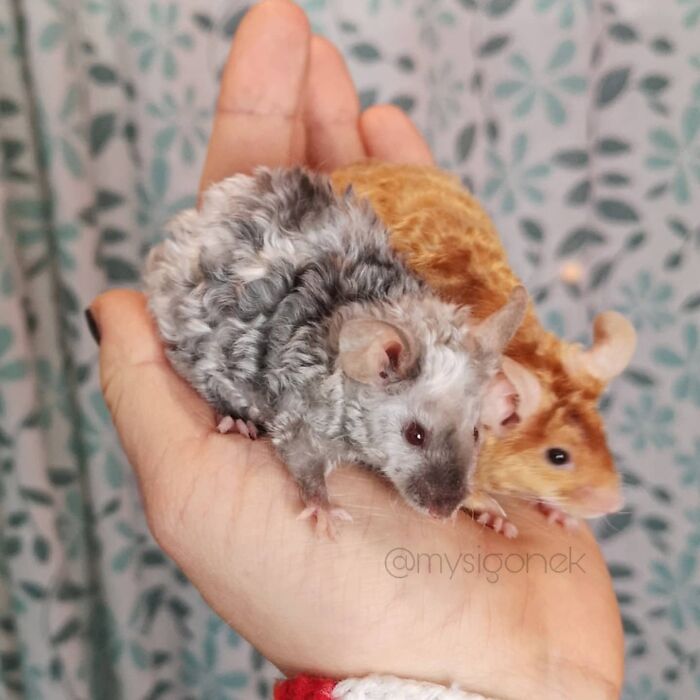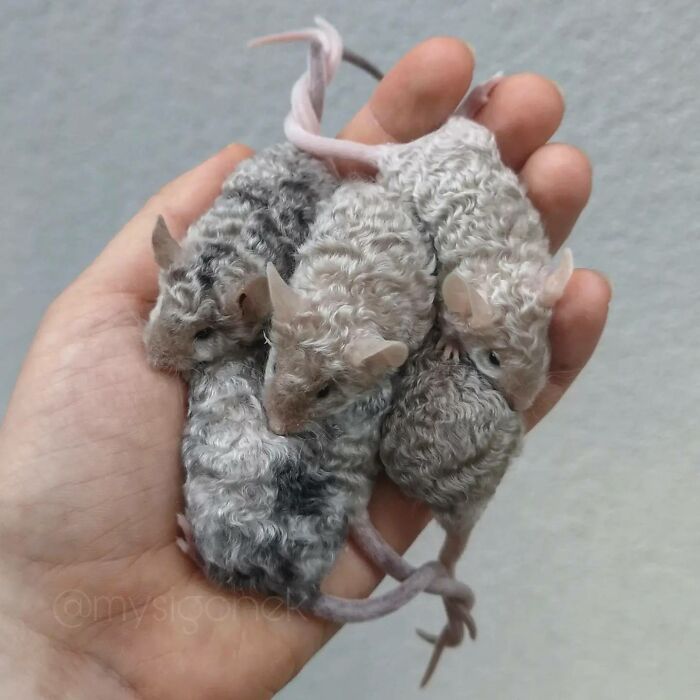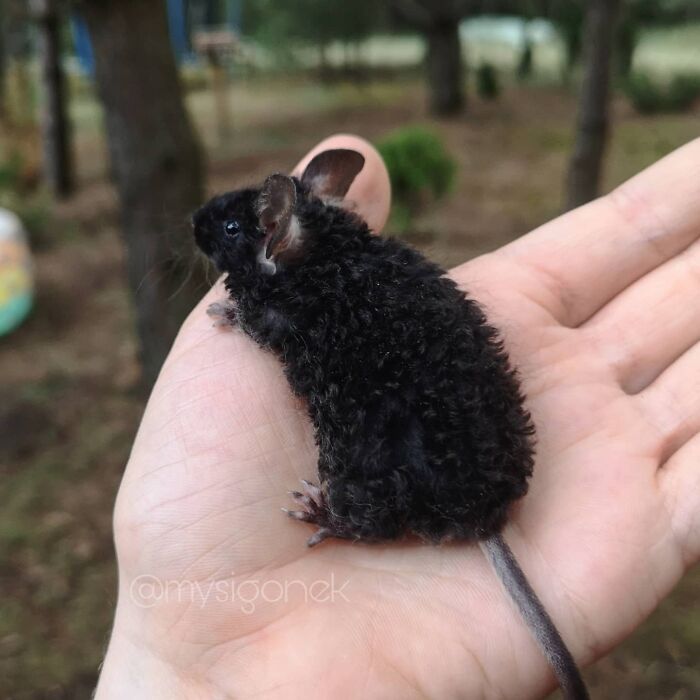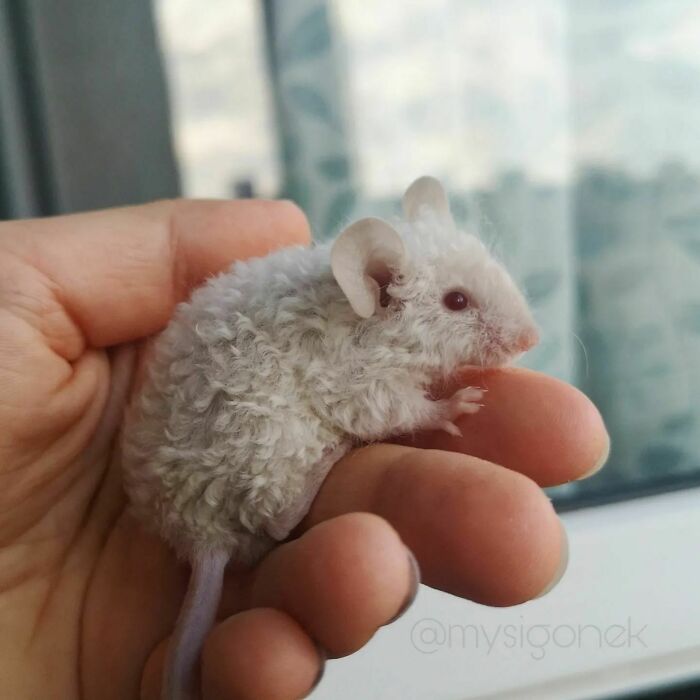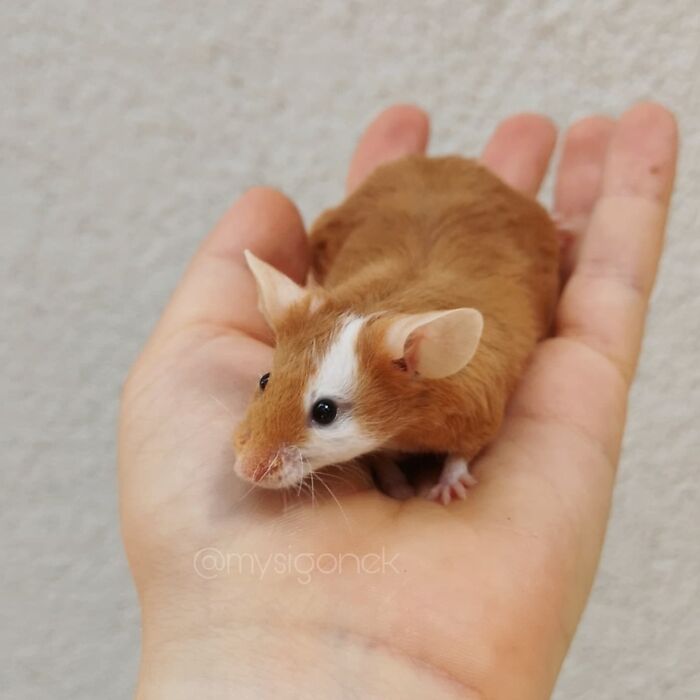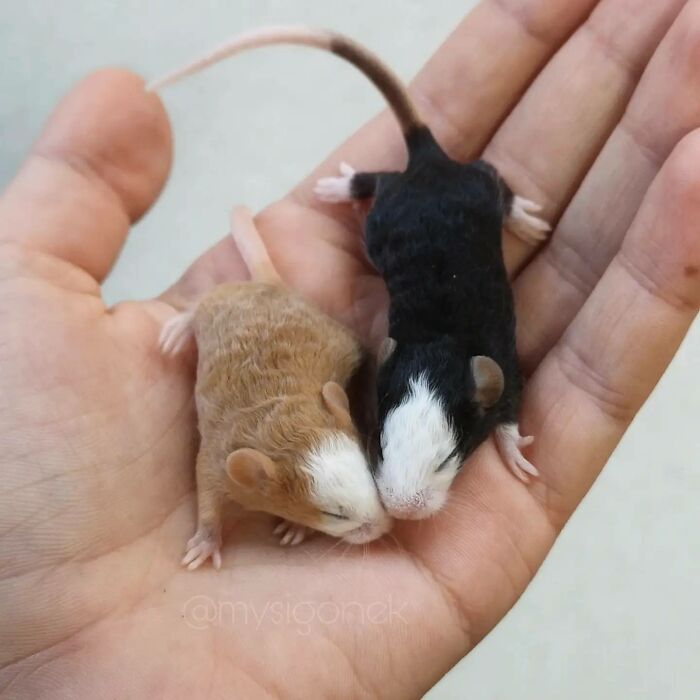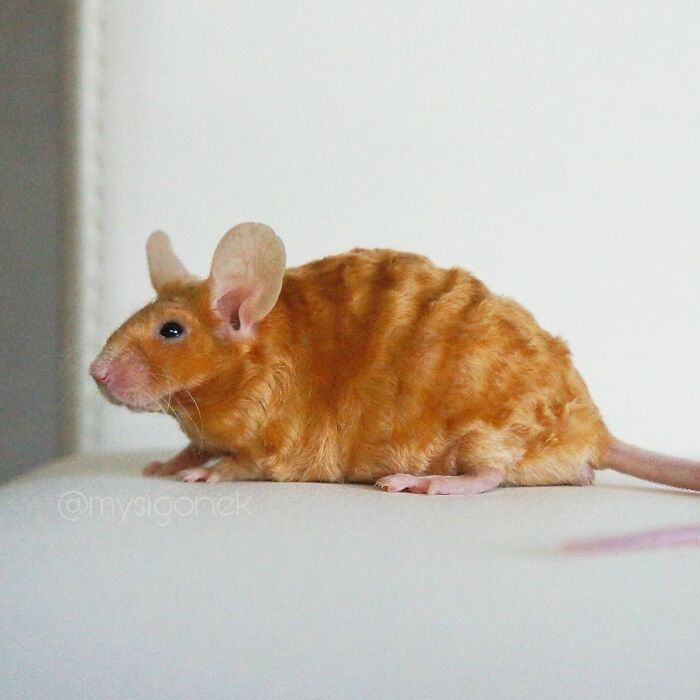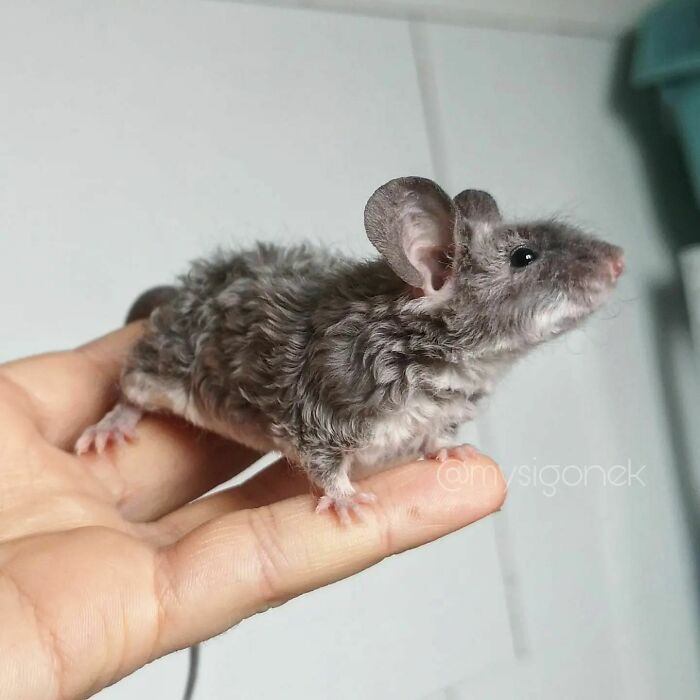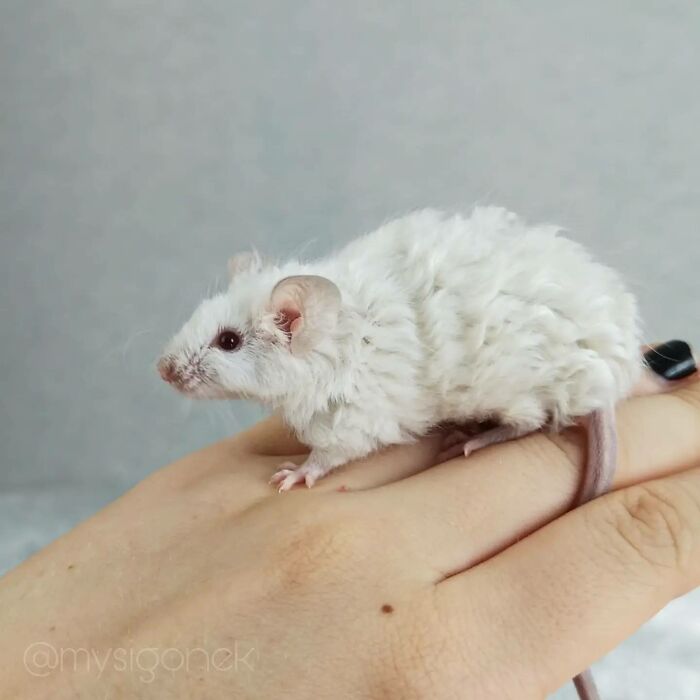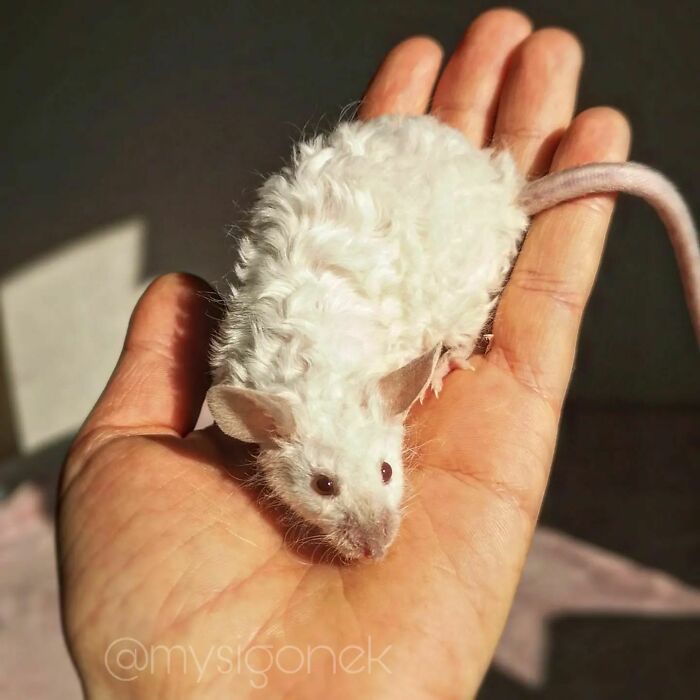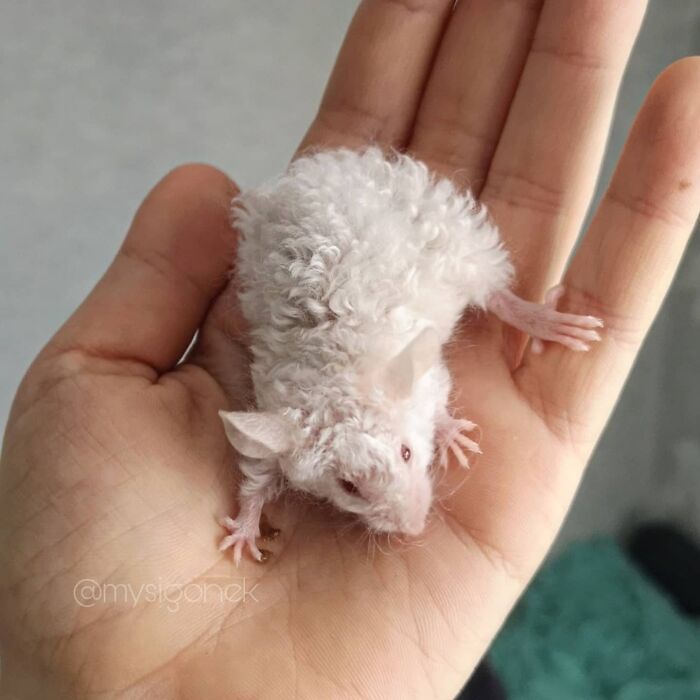Get ready to squeak with delight at these purebred mice that redefine the meaning of adorable. These fuzzy critters come in colors you’ve never seen before, with shiny and curly fur that you’ll be left craving to pet.
All of these mice are actually bred by one person and shared on the Mysigonek Rodentry page on IG for all to “aww” at. Read on for our interview with the owner of all these mice.
More info: Instagram
This post may include affiliate links.
Bored Panda reached out to the owner of the page to get some more insights.
When asked how their mouse breeding journey first started, the owner said that they had started searching more about rodents after getting a pet hamster.
“Watching YouTube videos, I came across the "MouseAgility" channel - mice doing tricks! I was absolutely stunned by their intelligence and curiosity.”
Then, they went on to get three pet-store mice, which is one of the worst sources to be buying animals, but they didn’t know that at the time.
Their new friends would get sick a lot, having even more problems with parasites. Since then, they began getting mice from ethical breeders only and soon became one themselves.
A day in a mice breeder’s life is no easy feat, apparently!
“Taking care of this many animals is a huge responsibility and it’s really time-consuming. Currently, I have nearly 200 mice (adults and babies),” Mysigonek Rodentry’s owner clarifies.
All of these mice need attention: feeding, taming, cleaning enclosures. According to them, constant disinfection and deworming are the worst.
“Another fact - mice can smell (or more specifically - their pee),” the owner says, jokingly, “when you have 5-10 of them it's tolerable, but can you imagine 100? 200?”
They need about 1-2 hours of work daily, sometimes they can take an entire weekend for cleaning.
The owner says that there are good and bad sides to breeding mice.
The good are their fascinating genetics, cute baby mice, having a “mouse TV” for your viewing pleasure, meeting other people crazy about mice, and the excitement about successful breeding efforts.
The bad - you often see sick animals, pain, birth complications, weak offspring, and euthanasia.
My kids and I have always called bats "mouse angels" and these make me believe it's true.
Rodents of all kinds have become popular pets in recent years, but the history of their domestication is very, very lengthy. People first “domesticated” mice about 15,000 years ago. I say “domesticated,” because they were pitter-pattering around human settlements and eating our crumbs about 3000 years before the advent of agriculture.
More recently and conventionally, keeping mice as pets has been documented in the 1700s. In China and Japan, they were domesticated as pets, even with Chinese records referring to yellow, albino, and waltzing mice.
These mice breeds were then imported to Europe and they became a very popular pet in the Victorian era and these ‘fancy’ mice were prized and traded. The UK’s National Mouse Club was founded in 1895 and has been “the leading authority on all things mouse” for more than a century now.
And just in case you were wondering, when you hear about ‘fancy’ mice and rats, that refers to domesticated animals, rather than their wild counterparts.
Nowadays, rodent pets are more popular than ever. According to a Forbes Advisor article for 2023, ‘small animals’ (hamsters, gerbils, rabbits, guinea pigs, chinchillas, mice, and ferrets) are the 4th most popular pet in the United States, only overshadowed by freshwater fish, cats and dogs, in that order.
These ‘small animals’ are present in 6.7 million US households. Pisces Pets say that hamsters are the most popular and a real classic choice, but mice are another popular contender, a very active and social animal.
There are loads of types of mice (as you can likely guess). You can also guess what’s the main difference between long-haired mice. Satin mice are ones with a dense, silky, and very shimmery coat. A lot of these mice that you’re seeing in this list, are the frizzy mice, with the wavy and very dense coat.
You’ve also got hairless mice, which - just like Sphynx cats - may be your unusual cup of tea.
Of course, there are so many more types, especially when it comes to the colors and patterns of their fur, it would be far too many to list.
I can't get over the curly ones, they're too adowobale
If these cute mice babies have got you interested in owning them as pets, you should know that no matter how big or small, no pet is a toy. Mice, similar to other rodents, have many quirks and requirements. The Spruce Pets has a good guide full of useful information if you’d like to find out more about mice as pets and what you should expect before getting one.
Look at that distinguished gentlemouse! Look at the way they are sitting!
Our guest also emphasizes doing your research and learning as much as possible about them, before even getting them.
“Keep in mind that most of our tiniest friends are social animals and need the company of their own species (excluding hamsters and often male mice). It means you need to get at least 2 of them.”
Rodents also need big spaces compared to their size and you shouldn’t forget to clutter their habitats with lots of hidey-holes and toys.
They suggest joining a Facebook group about your favorite species, as people there share their knowledge, experience, and tips.
Here’s a list of sites Mysigonek Rodentry suggests:
For people interested in mouse breeding, I recommend the following websites: Finn’s mouse’s Site, Fancy Mouse Breeders’ Association, the mentioned UK National Mouse Club, and the American Fancy Rat & Mouse Association.
PSA in case you're considering getting mice: please do your research beforehand, they are different in behaviour from other rodents. For example, unneutered male mice will not get along well. Also, despite their similarity, rats will hunt and potentially kill a mouse so never have both species together.
I'm not really sure why, but I'm not a big fan of rats and mice; I don't see them as vermin and I certainly wouldn't ever caused them any harm. I once had to capture and release a wild mouse from my home; I would never put out poison or use traps that kill. These are all such beautiful, adorable little creatures, I've never seen anything like them before!
PSA in case you're considering getting mice: please do your research beforehand, they are different in behaviour from other rodents. For example, unneutered male mice will not get along well. Also, despite their similarity, rats will hunt and potentially kill a mouse so never have both species together.
I'm not really sure why, but I'm not a big fan of rats and mice; I don't see them as vermin and I certainly wouldn't ever caused them any harm. I once had to capture and release a wild mouse from my home; I would never put out poison or use traps that kill. These are all such beautiful, adorable little creatures, I've never seen anything like them before!
